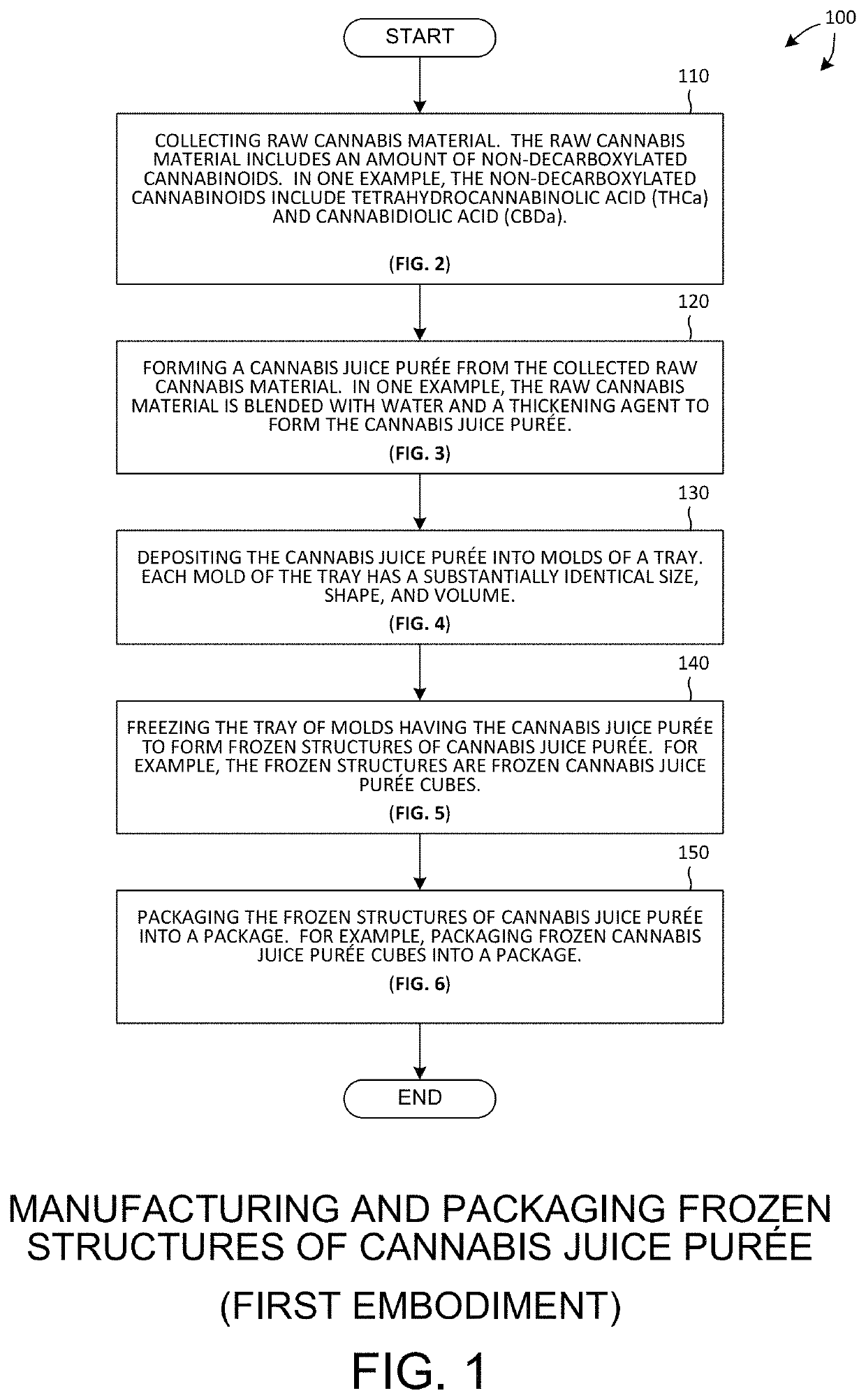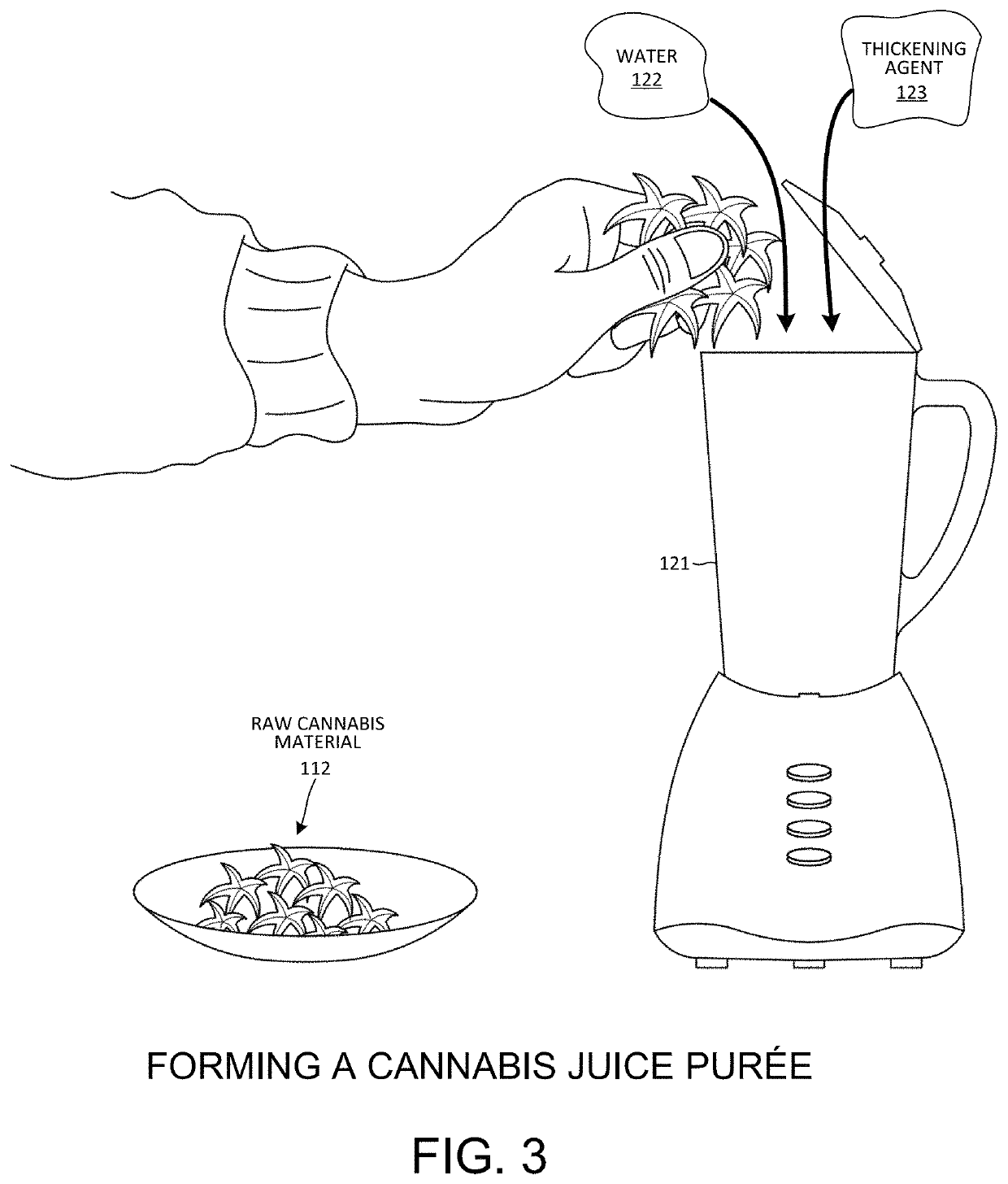Pasteurized juice formed from raw cannabis
annabis extract, which is applied in the field of manufacturing and packaging cannabinoid products, can solve the problems of inability to commercialize raw non-decarboxylated cannabis, and inability to find the method for consumers to have access to ‘raw’ non-decarboxylated cannabis, etc., to achieve cost-effectiveness, reduce the uncertainty of dosage ratio ratio a cannabinoid extract and cannabis, a raw cannabis and cannabis extract and cannabis, a technology of cannabis, which is applied in the field of cannabis and cannabis and cannabis and cannabis and cannabis cannabis and cannabis and cannabis and cannabis and cannabis technology, which is applied in the field of cannabis and cannabis and cannabis and cannabis and cannabis and other problems, achieve the effect of a raw material and the dosage uncertainty, reduce the dosage of cannabis
- Summary
- Abstract
- Description
- Claims
- Application Information
AI Technical Summary
Benefits of technology
Problems solved by technology
Method used
Image
Examples
second embodiment
[0213]FIG. 12 is a flowchart of a method 200 in accordance with a The method 200 is a method of manufacturing and packaging a plurality of frozen structures of cannabis juice purée that comprises a pre-determined amount of non-decarboxylated and decarboxylated cannabinoids. The amount of decarboxylated cannabinoids in each frozen structure is at least 5 mg. A structure with less than 5 mg is not considered to be a therapeutic dose of decarboxylated cannabinoids because consuming less than 5 mg decarboxylated cannabinoids has negligible, if any, effects on the user. The amount of decarboxylated cannabinoids may include one type of decarboxylated cannabinoid (such as CBD) or more than one type of decarboxylated cannabinoid (such as CBD and THC).
[0214]Non-decarboxylated cannabinoids exhibit therapeutic benefits without psychoactive side effects. Decarboxylated cannabinoids also offer therapeutic benefits but may be considered psychoactive depending on the amount of THC present. Decarb...
third embodiment
[0262]FIG. 42 is a flowchart of a method 600 in accordance with a The method 600 is a method of manufacturing and packaging a frozen ice pop of cannabis juice purée. In one specific embodiment, the packaged frozen ice pop of cannabis juice purée has an amount of non-decarboxylated cannabinoids and is non-psychoactive. In another specific embodiment, the packaged frozen ice pops of cannabis juice purée have an amount of non-decarboxylated cannabinoids and an amount of decarboxylated cannabinoids. The amount of decarboxylated cannabinoids in each ice pop is at least 5 mg. Decarboxylated cannabis infusion, non-decarboxylated high concentrate cannabis extract, or decarboxylated high concentrate cannabis extract are optionally added to the frozen ice pops of cannabis juice purée.
[0263]In a first step (step 610), a cannabis juice purée is formed. To form a frozen ice pop of cannabis juice purée that is non-psychoactive, raw cannabis material having an amount of non-decarboxylated cannabi...
fourth embodiment
[0281]FIG. 55 is a flowchart of a method 900 in accordance with a The method 900 is a method of manufacturing and packaging a cannabis juice purée. In one specific embodiment, the packaged cannabis juice purée has an amount of non-decarboxylated cannabinoids and is non-psychoactive. In another specific embodiment, the packaged cannabis juice purée has an amount of non-decarboxylated cannabinoids and an amount of decarboxylated cannabinoids. The amount of decarboxylated cannabinoids in each packaged cannabis juice purée is at least 5 mg. The packaged cannabis juice purée is not frozen and can be stored at room temperature or in a refrigerator until opened.
[0282]In a first step (step 910), a cannabis juice purée is formed. To form a packaged cannabis juice purée that is non-psychoactive, raw cannabis material having an amount of non-decarboxylated cannabinoids is collected. For example, in FIG. 2, raw cannabis material 112 is collected by trimming leaves 113 from the cannabis plant 1...
PUM
 Login to View More
Login to View More Abstract
Description
Claims
Application Information
 Login to View More
Login to View More - R&D
- Intellectual Property
- Life Sciences
- Materials
- Tech Scout
- Unparalleled Data Quality
- Higher Quality Content
- 60% Fewer Hallucinations
Browse by: Latest US Patents, China's latest patents, Technical Efficacy Thesaurus, Application Domain, Technology Topic, Popular Technical Reports.
© 2025 PatSnap. All rights reserved.Legal|Privacy policy|Modern Slavery Act Transparency Statement|Sitemap|About US| Contact US: help@patsnap.com



